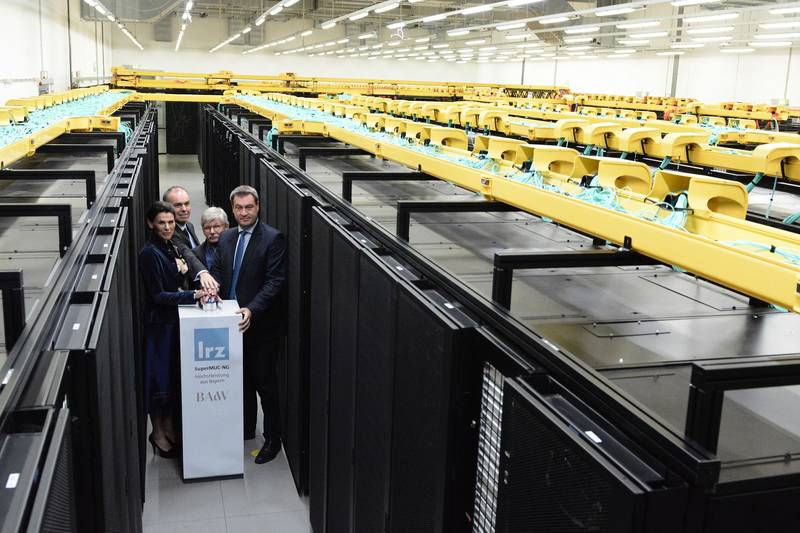
“SuperMUC-NG” is the rather unspectacular name of the new supercomputer, which started its operation at Leibniz-Rechenzentrum (LRZ) in Munich/Garching. In the future, it will calculate experiments and simulations and support the scientists of the TUM in coping with the flood of data.
Flops
SuperMUC-NG calculates an output of 26.7 petaflop/s – or 26,700,000,000,000,000 floating point operations per second. To explain: Flops means Floating Point Operations per Second. In a mathematical sense, operations have in common the addition and multiplication of numbers, for example. Floating point is the usual type of number representation for computers. Flops, therefore, indicate how many calculations a computer can perform per second. The more flops, the faster it is. But the supercomputer in Garching calculates with petaflops. This corresponds to 10 to the power of 15 flops.
With over 300,000 computing cores with 700 terabytes of main memory and 70 petabytes of disk storage, SuperMUC-NG offers completely new possibilities for numerical simulations. This also allows huge amounts of data, called big data, to be handled.
Application in various fields of research
The power of the supercomputer is used by scientists in research areas such as disaster control, personalized medicine and the emergence of the universe. Using supercomputers, however, one can also calculate the effects of earthquakes, such as the simulation of the 2004 Sumatra earthquake. This provided important insights into geophysical processes. At that time, the quake resolved devastating tsunamis in many coastal regions of the Indian Ocean.
And these are just some of the areas for which the researchers have used the computing power at the Leibniz Computing Centre of the Bavarian Academy of Sciences in recent years. At that time it was the predecessor of the SuperMUC-NG, which was called SuperMuc. By the way, MUC is Munich and NG means “Next Generation” – hence SuperMuc-NG.
Photo: (Alessandro Podo / LRZ)








